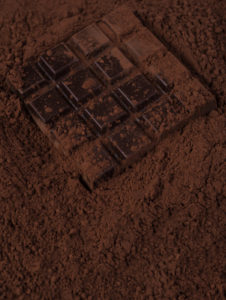The Future of Powdered Alcohol

Have you ever heard of powered alcohol? Did you know a powered alcohol product called Palcohol was approved for sale in the U.S. in April of 2014? Within a couple of weeks of approval, the US Alcohol and Tobacco Tax and Trade Bureau (TTB) recalled the approval of seven Palcohol labels, saying they were issued in error. According to Mark Phillips, the creator of Palcohol, the original label wording was edgy, “and everything went nuts” when their unfinished website was revealed. On March 11, 2015, TTB finally approved four Palcohol labels, permitting the product to be sold, but the current Palcohol website says it won’t come to market until late 2021, at the earliest.
In a video on the current Palcohol website, Phillips said because they weren’t prepared with the proper message about Palcohol, “People imagined how it would be used.” Reports said it would be easier to get drunk by snorting it; easier to secret sneak alcohol into places; easier to spike a drink; and easier for kids to get ahold of it. Phillips said, “All of those statements couldn’t be further from the truth.” The so-called last straw, was Senator Charles Schumer’s call to ban Palcohol, which he supported by drafting a bill. The legislation has yet to make it to the floor of the Senate for a vote.
Mark Phillips claimed Schumer was completely ignorant about the truth of Palcohol. According to Phillips, Schumer’s letter to the FDA and his press conference were so riddled with inaccuracies and irresponsible statements, he just had to “set the record straight.” He then spent another fifteen minutes attempting to do just that. In conclusion, he said Palcohol is a revolutionary product with so many positive uses for consumers and businesses: “Why would anyone want to ban powered alcohol with all the benefits to society?” Let’s see.
There was a May 2014 report that “Schumer Wants FDA to Halt Approval of Palcohol.” Senator Schumer called Palcohol “the Kool-Aid of teen binge drinking.” The Albany County Sheriff said he visited the Palcohol website before it was revised and saw quotes from Phillips indicating it could be snorted. He reportedly saw pictures under the Palcohol name where it was cut into lines like cocaine. There was also a picture of doughnuts where people were pouring a Palcohol pouch on the doughnuts.
There was a screen shot taken from the initial “edgy” website suggesting you could take Palcohol to a concert to have a mixed drink at a fraction of the cost. If you were a college football fan, it suggested you could “Bring Palcohol in and enjoy the game.” There were several different food suggestions, and a reminder to add Palcohol AFTER the dish is cooked as the alcohol would burn off if you cook with it. With regard to snorting Palcohol, they cautioned to be careful. “You’ll get drunk almost instantly because the alcohol will be absorbed so quickly in your nose.”
When I wrote “Hype Over Powered Alcohol” five years ago, I described how someone writing for Vice related how he made his own powered alcohol and sprinkled it on pizza. Then he snorted it and lit it on fire. He said powered alcohol, at least his 192-proof grain alcohol version, burned like napalm.
The National Alcohol Beverage Control Association (NABCA) has a report of a white paper on its site, “Powered Alcohol: An Encapsulation.” The origins of powered alcohol dated back to the 19th century, when William Clotwoethy was issued a patent to be used in the food industry. In 1964, Harold Bode filed a patent for an “alcoholic dry beverage powder.” In 1976 General Foods was granted a patent for an “alcohol-containing dextrin powder” that could be used in food and as “a high ethanol-containing powder” that could be used as a base for alcoholic drinks.
The NABCA noted the temporary approval of Palcohol in 2014 began a wave of concern among lawmakers such as Charles Schumer. While there is no current federal legislation banning powered alcohol, many states have done so. The Alcohol Justice website lists 34 states that ban powered alcohol, 12 with no legislation (Montana, Wyoming, South Dakota, Wisconsin, Iowa, Missouri, Kentucky, New Mexico, Oklahoma, Arkansas, Mississippi and Florida) and three (Arizona, Colorado and Texas) that allow powered alcohol. The NABCA also described some potential public health and safety risks of using powered alcohol. It cited the American Medical Association’s June 2016 press release calling for a ban on powered alcohol, because it has “the potential to cause serious harm to minors.” Further, the NABCA noted the possibility that powered alcohol could be snorted and its easy concealment means it could be given to an unsuspecting person.
There was a 2016 study of the awareness and likelihood of college students using powered alcohol published in The American Journal on Addictions. 1,841 undergraduate students were asked if they had heard of powered alcohol or Palcohol. Only 16.4% had previously heard of powered alcohol. Those who had not heard of it were provided with the following description of powered alcohol:
Powdered alcohol is freeze-dried alcohol (rum or vodka), in a powdered form packaged in individual serving size packets. One packet added to 6 ounces of liquid is equal in potency to a standard mixed-drink. It is sold under the brand name “Palcohol.”
When asked if powered alcohol should be legal in their state, 13.8% said “definitely no,” 25.9% indicated “no,” 40.4% said “possibly,” 13.7% said “yes,” and only 6.1% responded “definitely yes.” Nearly 25% said they were likely to use it if/when it became available. They were also asked about their current alcohol use, and then the likelihood of them using powered alcohol (Palcohol) before they were of legal age or of their friends using it. They were asked whether or not they would try various ways of ingesting powered alcohol, such as mixing it with alcohol, not water; sneaking it into a place where it was prohibited (like a football game); snorting it; smoking it; eating it. Only 16.4% of students had heard of powered alcohol before. 23.3% said they were “extremely likely” or “likely” to try it; and 62.2% said they would misuse it.
Specifically, these participants who intended to use powdered alcohol indicated being “likely” or “extremely likely” to misuse in the following ways: use the product although underage (37.2%), sneak the product into restricted places (22.9%), mix the product with alcohol instead of water (16.1%), eat the powdered alcohol (i.e., sprinkle on food; 8.6%), snort the powdered alcohol (3.9%), and smoke the product (1.6%).
The authors said it was logical to predict that with professional marketing, social media, and peer influence, actual use of powered alcohol among college students would exceed 25%. However, a more alarming issue was that among college students indicating the likelihood of using powered alcohol, over 60% indicated they would misuse it in some way. Most said they would misuse it by sneaking the product into restrictive venues. “Not surprisingly, likelihood to use and misuse powdered alcohol was also highly correlated with hazardous drinking, which indicates that those most likely to use powdered alcohol are also at high risk for experiencing alcohol-related problems.”
The creator of Palcohol, Mark Phillips, seems to have failed to put the record straight on powered alcohol. The issues that he dismissed as being made up and far from the truth seem to have been central concerns of the American Medical Association and acknowledged as risks by the NABCA, the National Alcohol Beverage Control Association. Senator Charles Schumer also seems to have been less ignorant about the dangers of powdered alcohol than Phillips thought he was. And Schumer’s rhetorical statement of Palcohol being “the Kool-Aid of teen binge drinking” was supported by the 2016 study, “Powered Alcohol: Awareness and Likelihood of Use Among a Sample of College Students;” at least among teen-aged college students.
Can you imagine a future without Palcohol? We can hope for one, as the potential risks seem to outweigh the so-called benefits.

